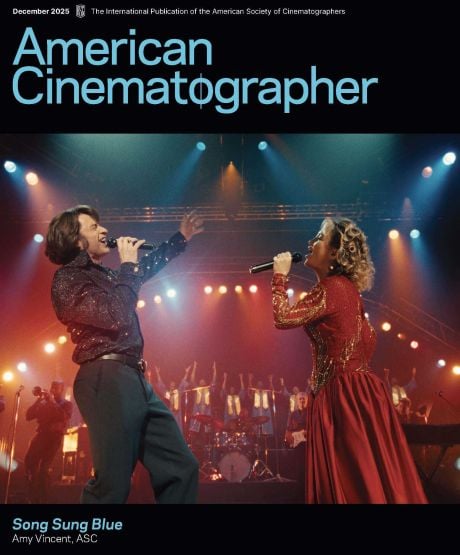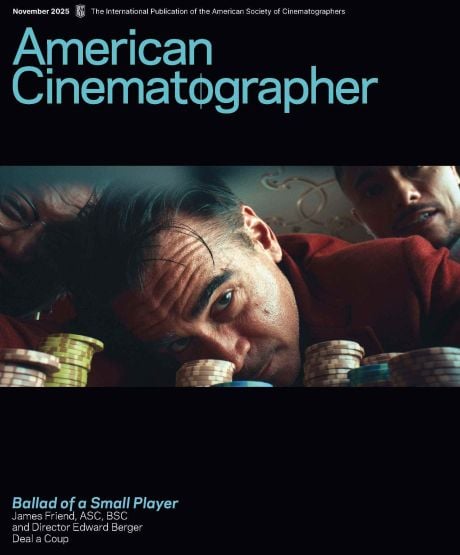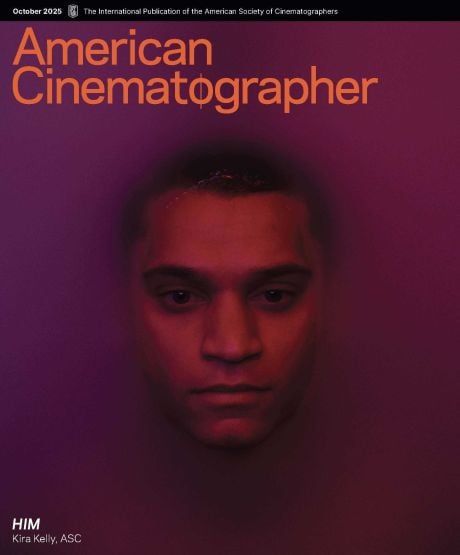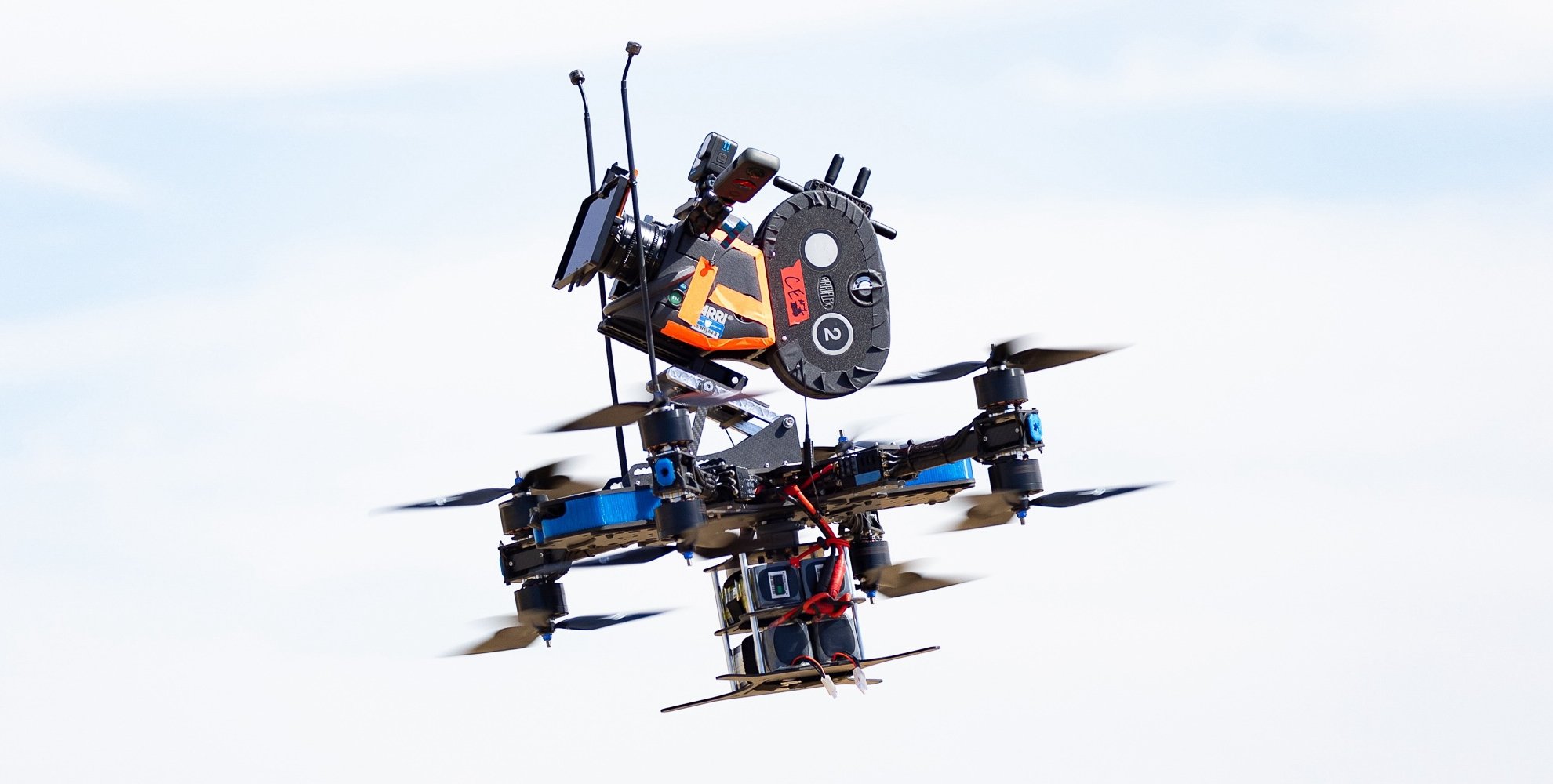
Drone Cinematography: The Sky’s No Limit
Advances in technology have made the collaboration between cinematographers and drone teams more creative than ever.
This article originally appeared in the Feb. 2025 issue of AC.
Photos courtesy of Beverly Hills Aerials
Aerial imagery achieved with drones has added a useful tool to the cinematographer’s creative arsenal, but the process, which involves close collaboration between directors of photography and drone pilots, evolves constantly with the development of new, more advanced systems.
Before the advent of heavy-lift unmanned aerial systems like the Freefly Alta X and Shotover U1 — which can loft an Arri Alexa 35 or Sony Venice without difficulty — and prior to the development of smaller, more agile platforms with integral, high-quality cameras (such as the DJI Inspire series), there were multiple iterations of small, radio-controlled, unmanned devices like the Flying-Cam. A more advanced version of the latter, the Flying-Cam 3.0 SARAH (Special Aerial Response Automatic Helicopter), was introduced in 2012. Configured like a typical full-scale helicopter with a single main rotor and tail rotor, the 3.0 SARAH was a progenitor of today’s heavy-lift drones and was sent aloft on numerous films, including Skyfall, Oblivion and Prisoners.
“When drones came into play, it opened up this whole new language where you could do really fun things.”
— Nicole Hirsch Whitaker, ASC
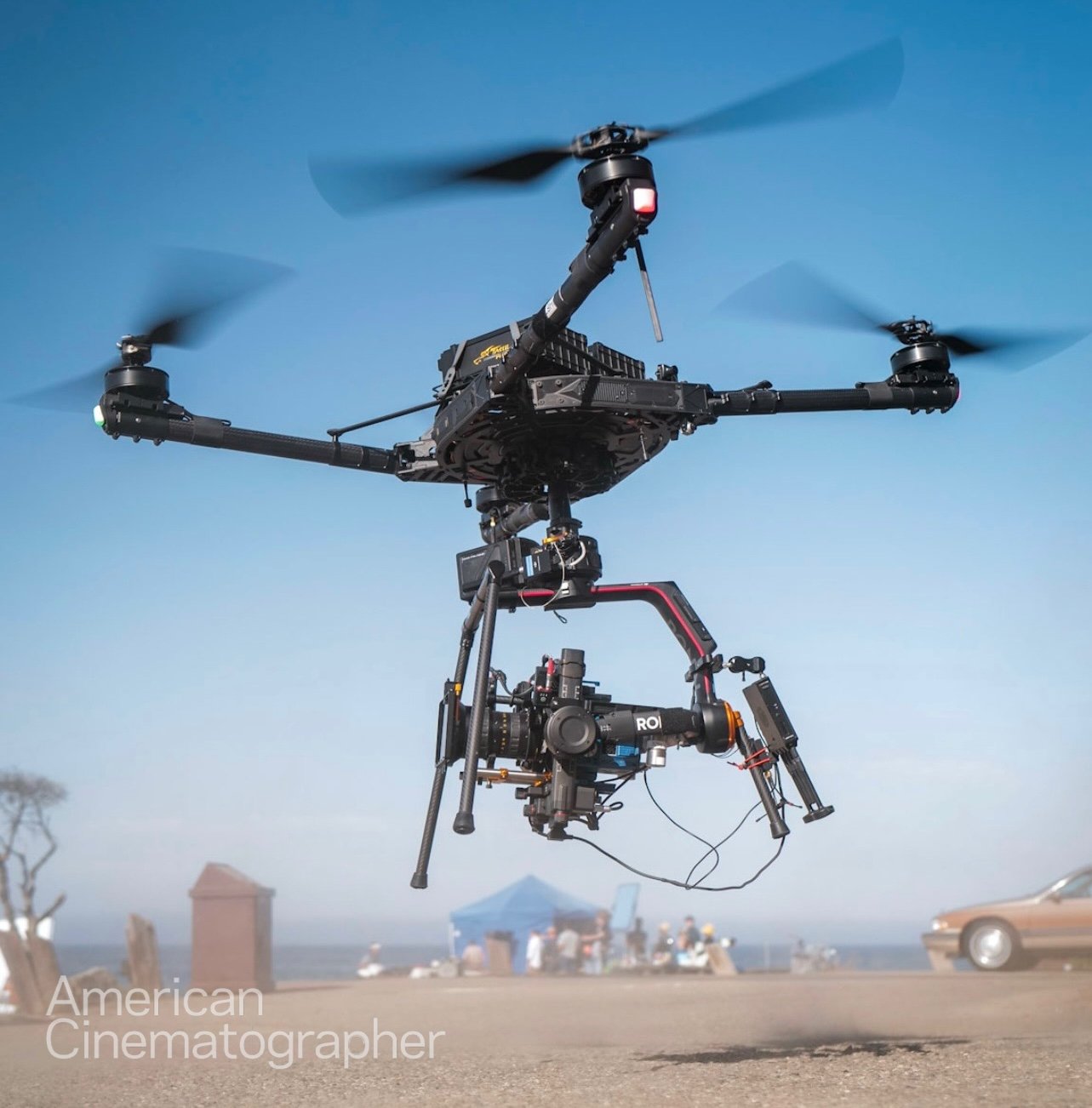
There were some specific benefits to having a single main rotor, like the SARAH, rather than the multi-motors and props we often see today. A single rotor can achieve a higher top speed for a heavier-lift system — and, very importantly, like full-scale helicopters, they are capable of autorotation, which allows the ship to land safely in the event of a power failure. Of course, autorotations are hard enough to fly well when you’re onboard in the pilot’s seat, but executing the maneuver remotely is very difficult even in the best conditions.
The disadvantages of a single-rotor system are clear: Single-rotor helicopters are inherently unstable, their rotor systems are always more complex than those found on a multirotor system, and they require more sophisticated autopilots to enhance stability. Regardless, the 3.0 SARAH drone system was a major technical achievement that earned Flying-Cam a 2014 Scientific and Technical Award from the Academy of Motion Picture Arts and Sciences.
Back in 2012, when this system was used for the opening sequence of Skyfall, operators needed an actual pilot’s license to fly it. The Flying-Cam system was also very expensive, hovering around what a small piston-powered, manned chopper would cost: $300,000 or more, even before camera gear was mounted.
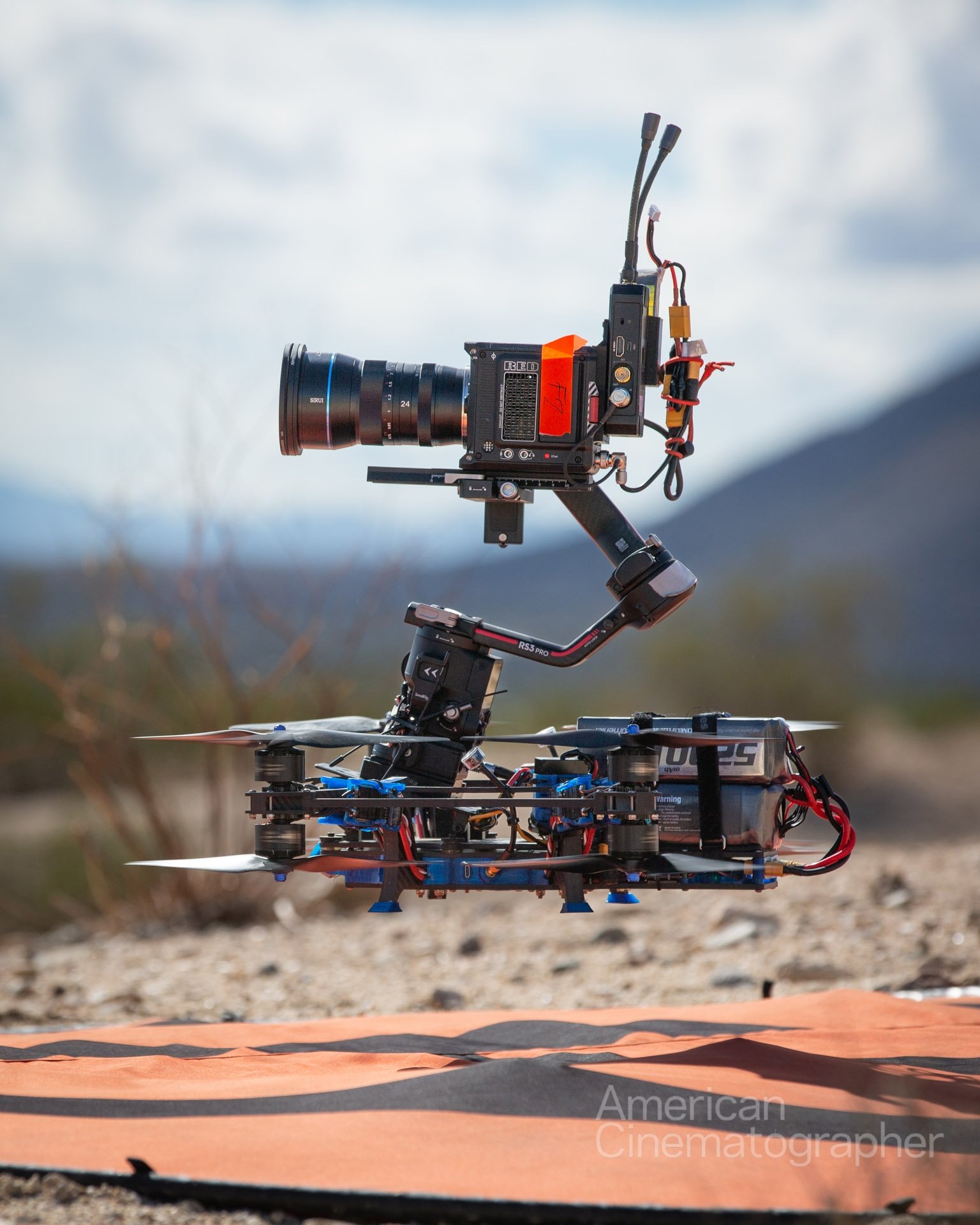
For Skyfall, directed by Sam Mendes and shot by Roger Deakins, ASC, BSC, a Flying-Cam unit mounted with a Red Epic was paired with Zeiss Master Prime lenses to follow actor Daniel Craig, playing superspy James Bond, as he chases a mercenary during a roller-coaster pursuit through the corridors and across the rooftops of Istanbul’s Grand Bazaar. The aerial system was able to twist, turn and swoop after Craig, grabbing angles that made the sequence more visceral and compelling for the audience. It afforded Mendes and Deakins camera positions and angles that would have otherwise been impossible with an actual helicopter, crane, cable-cam or any other support system.
In its day, the Flying-Cam system represented a disruptive revolution, but today, the multirotor design is now the preferred configuration for most drones that fly cinema cameras. Multirotors are inherently more stable and have more redundancy, they are less complex and much easier to fly, and the cost barrier to entry is much more accessible. And while drones allowed Mendes and Deakins to break new ground, today they are generally ubiquitous on sets and nearly as common as dollies or cranes. ASC member Nicole Hirsch Whitaker observes, “When drones came into play, it opened up this whole new language where you could do really fun things.”
For Whitaker, those “fun things” have included flying a drone under a car. Whitaker recalls, “I did a pilot called Shining Vale [AC May 2022], shot here in Los Angeles for Warner Bros., and the director and I were trying to think of the most incredible opening shot.”
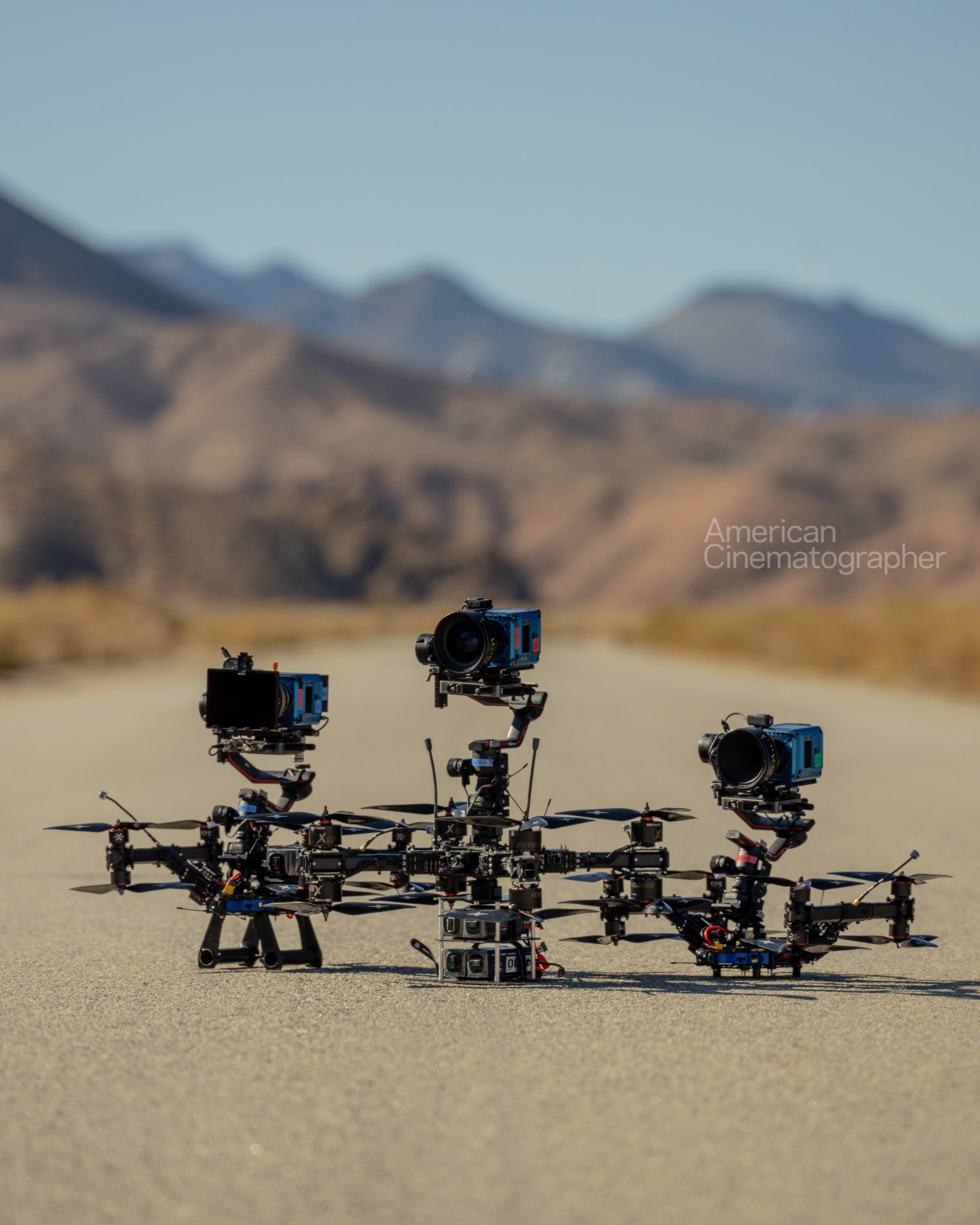
The script for the pilot had a scene where a car drives down a highway, where Whitaker wanted to reveal, in a drone shot, that the location is a rural area. “[A family] is leaving New York City to move to a place in the middle of nowhere, after the wife’s had an affair and is struggling with alcoholism,” she explains. “So, she and her husband pack up the whole family and go to live in this really small town.”
During a conversation with the director, Whitaker suggested it would be cool if it were possible to fly the drone under the car and then climb to reveal the car and landscape. “I called Michael and Caleb [at Beverly Hills Aerials] and at first they said, ‘You’re crazy. How are we going to do that?’”
Michael Izquierdo and Caleb des Cognets are, respectively, chief pilot and chief aerial director of photography at the Los Angeles-based company; they are also Whitaker’s chosen drone team. Looking back at the car shot, des Cognets remembers, “Nicole wanted a shot that started with the camera pushing along a road up in Griffith Park, very low but with some speed. There’s just the quiet ambient noise of birds. Then, suddenly, you hear vroom and the car speeds over the drone, which shows the car’s undercarriage. Once the car passes over the drone and leaves the frame, the camera flies up over trees to reveal the landscape.” After doing a series of tests, the aerial experts came up with a solution to achieve the shot, but it would require a compromise on camera quality, flying either a Komodo (better) or GoPro (smaller) depending upon the distance from the bottom of the car’s bumper to the road. Whitaker checked the picture car and reported that it was an SUV with just 7" of clearance underneath. For such a tight squeeze, the GoPro proved to be the best option. “Michael and I were both on the call sheet that day,” des Cognets says, “and we figured there was no way we wouldn’t break a couple of drones doing the shot, so we brought eight of these little FPV drones with 5-inch propellers and the latest GoPro rigged on each one. We were ready to sacrifice them all for the shot, but I think we only got knocked out of the air once. We did two or three takes and we got the shot, which looked great.”
Whitaker enthuses, “That’s what it’s all about: putting the camera in a place that people haven’t seen before, to really surprise the viewer so they’ll go, ‘Whoa, that’s cool!’ Pondering her various collaborations with the Beverly Hills Aerials crew, she adds, “We’ve had a lot of fun inventing things together.”
Whitaker leverages drone technology on tech scouts to help with previs and determine what the right tool will be on the shoot day. “My questions are always, ‘What makes more sense logistically? What might be faster? What might get me more height, and what might give me more flexibility?’ With a drone, you have so much flexibility. I will bring a drone on a scout, but occasionally, at some locations, it’s just too complicated to set up in time. So, if we can’t have a drone on the scout, a lot of times we don’t even see the shot until the day we’re shooting.
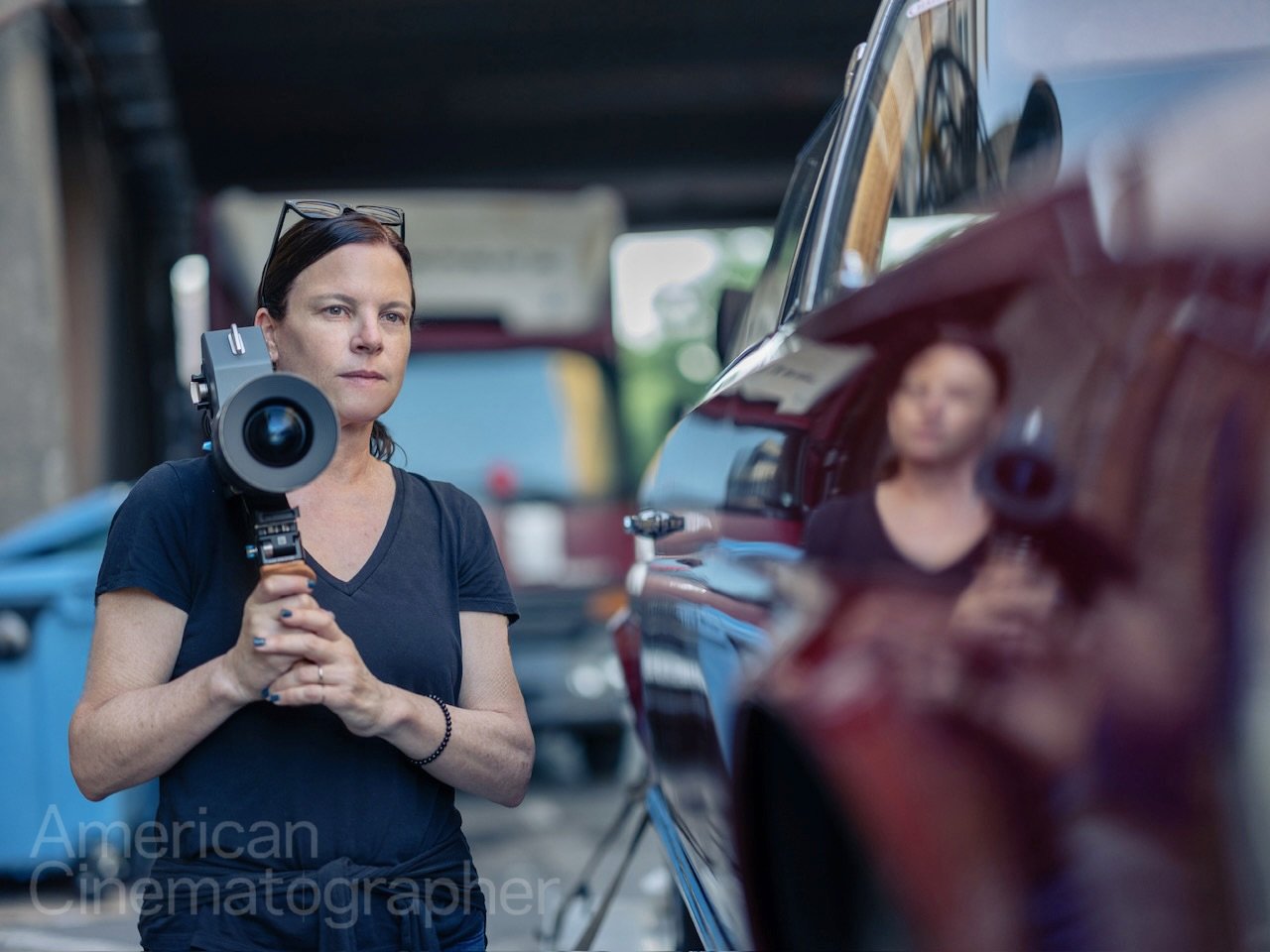
“On the other hand, if you set up a crane, sometimes you get super high in the air, and you end up opening a world of hate for the visual-effects team — there are things you just don’t want to see. With the drone you could say, ‘Let’s scoot 100 feet to the right and drop down 100 feet,’ without the shot costing production $50,000 — whereas, with a crane, you’d be kind of stuck. Obviously, if you have all the money in the world, you’d have both a crane and a drone on set, and you could use both to get all the shots you want. But sometimes you just don’t have that luxury or time. A drone does offer you many more options to do different shots, which is fantastic.”
Whitaker gets her drone team involved early in the creative process. “If I’m looking at a script and I can see that there’s going to be drone work, I’ll immediately reach out to the drone company to talk about the camera and what we can do with the drone versus a crane — because, obviously, there are still limitations with the drone. The first person I reach out to is usually Michael, because he’s the person who can tell me if we can actually do the moves we want by flying a drone. But sometimes I reach out to Caleb first because he understands every facet of the aerial production process.”
Adds des Cognets, “I like to get in there as early as possible, because it helps tell me not only what aircraft we should be flying to achieve the filmmakers’ vision, but also which camera and lenses to use and how we’re going to move the camera. The sooner you can open that conversation with your drone team, the better, because it allows them to ensure that whatever nuanced platform is required to achieve the shot is ready to go.”
He notes that to advise cinematographers on available equipment and what’s possible, he must keep up with any new developments in UAS (unmanned aerial system) technology. “So, much of my job is education, because drone tech is [always] evolving,” des Cognets says. “I have to stay on the bleeding edge and keep a lookout for the latest and greatest technology, or an alteration to a platform, that will unlock new creative possibilities. My favorite part of the job really is being a Rolodex of drone information; I’m the guy that asks, ‘Hey guys, what’s happening in the scene, and what do you want the drone shot to do for the scene?’”
Des Cognets will suggest drone-platform options that can carry specific kinds of cameras or lenses, so the drone can then “do this or that, and go from here to there. We can even catch the drone and [continue a shot]. It’s really exciting for me to show filmmakers a new way to move the camera, or maybe in a way they haven’t thought of before.” However, he adds that his personal philosophy on camera movement is very traditional. “When it comes to aerials — and drones, specifically — I don’t think it’s any different than any other camera platform or tool: Less is almost always more.”’
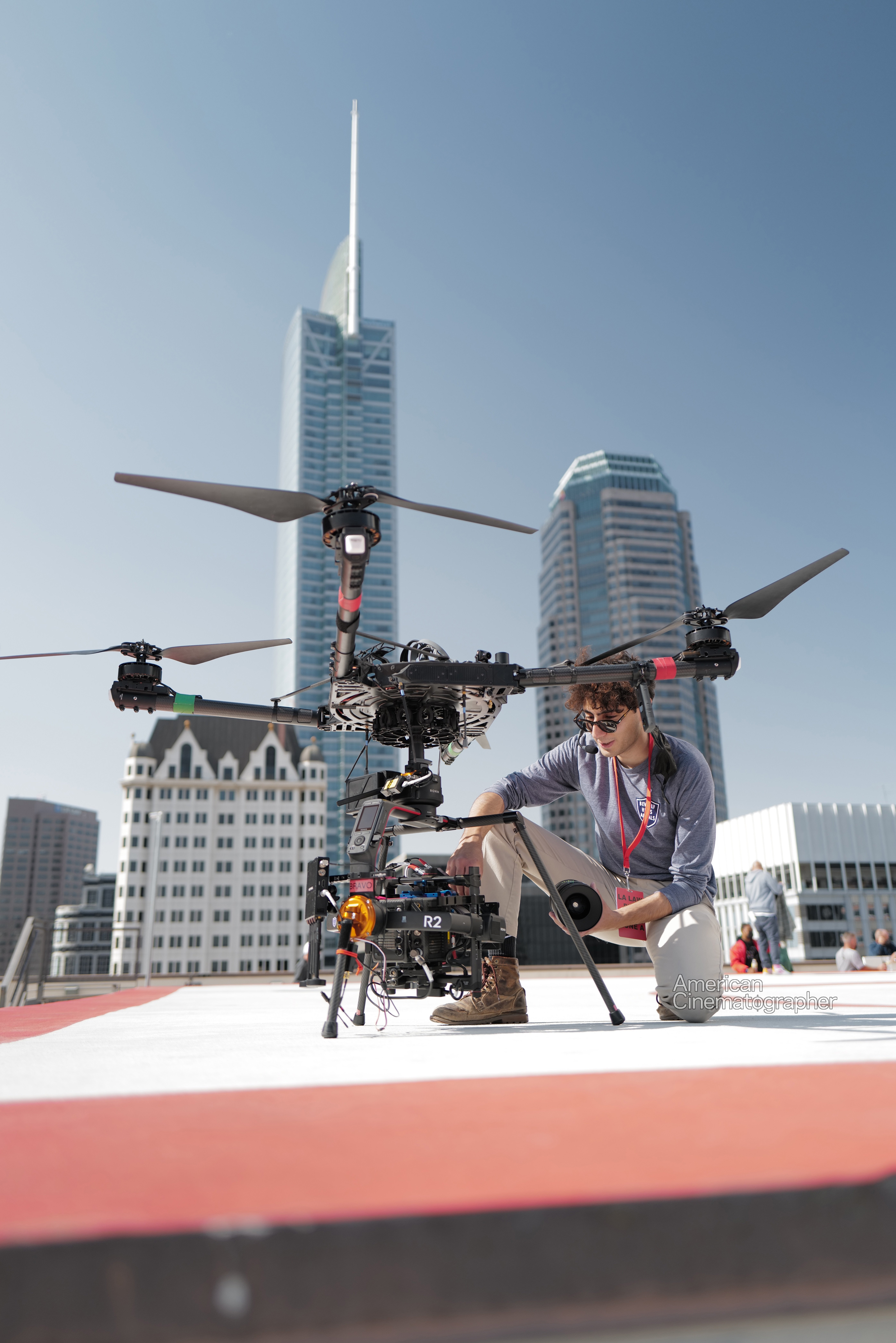
Determining which drones can fly with specific camera and lens packages, des Cognets says, “comes down to what your priorities are as a cinematographer. Are your priorities maximum resolution for VFX and a clean image? Or are your priorities to move the camera as fast as possible and less about resolution or beautiful glass? Or are you trying to specifically match the look of the cameras and lenses you’re shooting with on the ground? Once you dial that in as a cinematographer or director, your priorities will help steer us toward the right platform to fly. Concessions sometimes need to be made once you decide what your priorities are, because you can’t have a Sony Venice with Cooke anamorphics on an FPV drone that goes 65 miles an hour chasing a car and then flies right up to the talent’s face — that’s just not going to happen. We do have larger FPV drones that can fly an Alexa Mini with lightweight anamorphic lenses, but you’re still not going to get super-close to talent. But if we went to a Red Komodo or a Sony FX6 — two-pound camera bodies with some lightweight, rehoused still-photo glass, where you have a lighter lens that still is similar to the look of your project — you can get close to what you want as far as quality and look, but on a much smaller platform that allows you to do more things, and safely. By defining your No. 1, 2 and 3 priorities, in that order, we can narrow down what will work for the shot.
For Whitaker, close collaboration between a show’s director of photography and aerial cinematographer is key. “If I’m lucky enough to be on a production where we can have prep time with the drone pilot and DP before we scout, the best plan, for me, is to have a meeting, do a director scout with the drone team, and talk about what we can do. It’s important to find out from them what we can do and what’s safe, because safety is so important with drones. First, though, we’ll have a creative conversation and discuss what the director and I are looking for, and a lot of times [the aerials team] will come up with something even more interesting than we thought of. They’re our camera operator in the sky.”
Des Cognets adds, “It always starts with a conversation over the phone. We’ll give our thoughts based off a storyboard, or what have you. From there, [the process] usually culminates in a scout on location with a pilot who [fields questions from] the cinematographer about camera and lens options.”
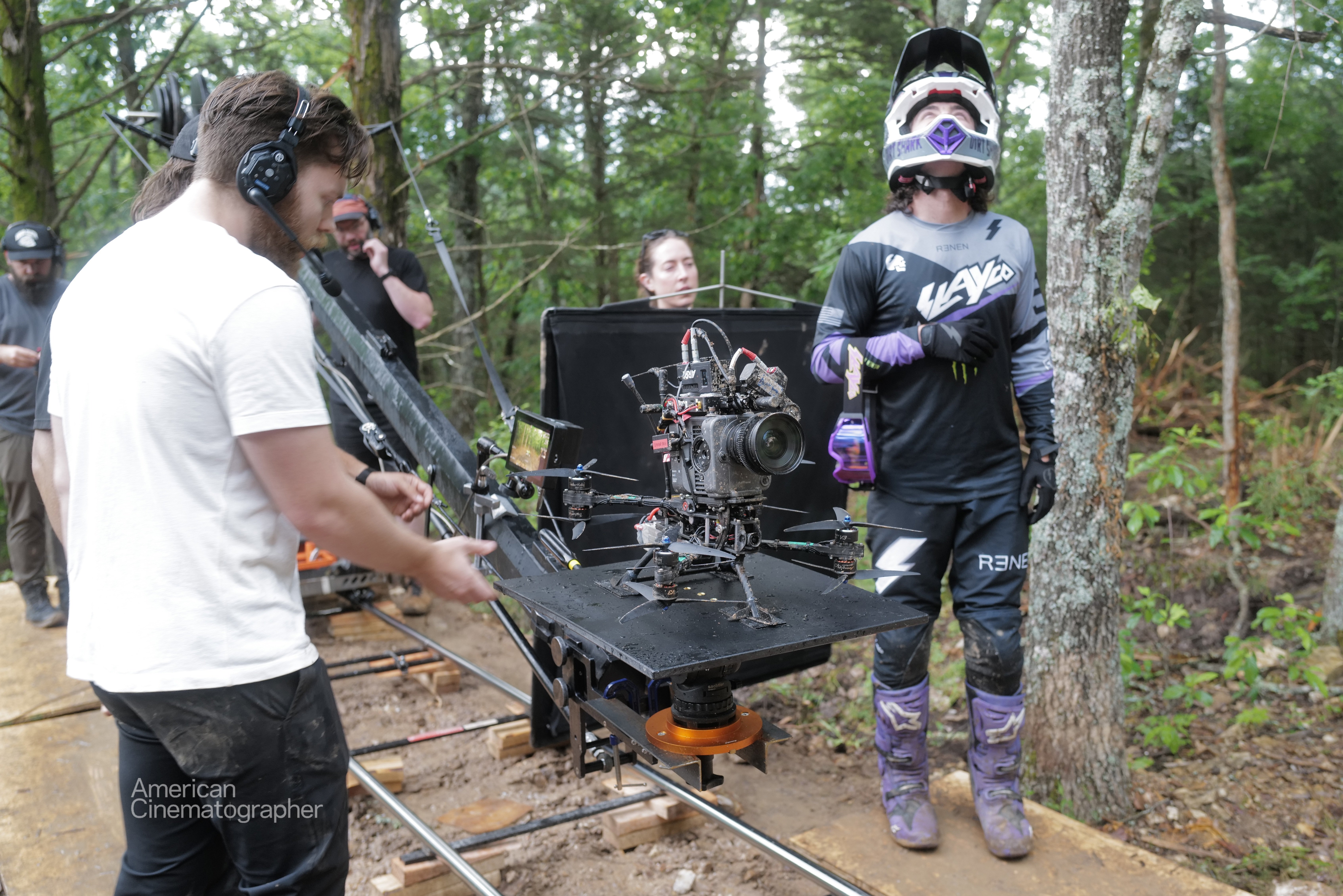
On the day, he continues, “the first take usually tells you a lot about what’s going to work and what won’t. I like to try to get into the cinematographer’s and director’s minds as much as I can before that first take, so I have a very clear vision of what they’re going for. And after that first take, if it doesn’t feel to me like we got what they wanted — usually before they even tell me, ‘Hey, you need to go a little faster,’ [or something else] — I’m already telling my pilot, ‘Back to one, and for this next take, I want you to go 20-percent faster,’ or ‘I want you to drop a little bit sooner after that tree.’ There’s a lot of back-and-forth with the DP and director.”
Des Cognets views his collaboration with cinematographers as a more advisory role, making suggestions and steering them in the right direction in terms of what’s possible or feasible — always with tact. If he doesn’t think a particular approach is working, “I’ll usually say, ‘I love that idea, but how about this?’” He’ll typically make suggestions about the specifics of a shot, based on his knowledge of “the mechanics of the way the drone moves, or what looks best and doesn’t feel jarring — unless ‘jarring’ is what they’re going for.
“I’ll often hear that the cinematographer and director just want to use the drone for a ‘drone shot’ — something we’ve seen a million times. There’s still purpose to that, and a lot of our work does [involve shooting] establishing [shots]. But I think it’s cool when cinematographers and directors are open to the idea of establishing [a scene] in a way they haven’t thought of before. Instead of just staying high and wide and doing a shot like it’s a sky dolly, we’re coming into the scene and arriving somewhere — perhaps down to the ground and the talent.
As FPVs are maturing, the quality of the cameras they can fly is also improving. Whitaker thinks FPVs are “fantastic” — adding, “They’re obviously [designed] for a certain purpose, but you have a lot of flexibility in terms of your verticals and your speed. Caleb and Michael fly them with FX6s and Komodos. And you don’t have to put a really expensive film lens on [an FPV]; you can just put something nice on them and do some really good, cool work. The first time I used one was because we needed to have a POV of a superhero running down an alley at 60 miles an hour and then taking off and flying up into the sky, super-fast, over the city of Los Angeles. [We did it with an FPV] and it blew my mind; I’d never seen anything like that before. It was just really exciting.”
With FPV drone technology continuing to evolve, des Cognets maintains that there’s no other tool that allows a filmmaker to put a camera in the places an FPV can go, or move in the way an FPV can. “You get a completely different feel for the shot,” he says. “It has a ton more energy, and you’re swooping down and through things.” The drone is basically flown fully manual to provide what he calls a “fighter-jet POV.” But now, he adds, “things have progressed, and we have a gimbaled FPV, so you have the precision flying capabilities of the FPV drone, [combined] with a remote head that allows the camera operator to [remotely] operate the camera” — a strategy that was previously not possible with FPV drones.
According to des Cognets, the key advantages of a gimbaled FPV platform are that the drone can be flown “faster, lower to the ground, and through smaller gaps than a heavy lift would — and with more precision at higher speeds. It gets very nuanced.”
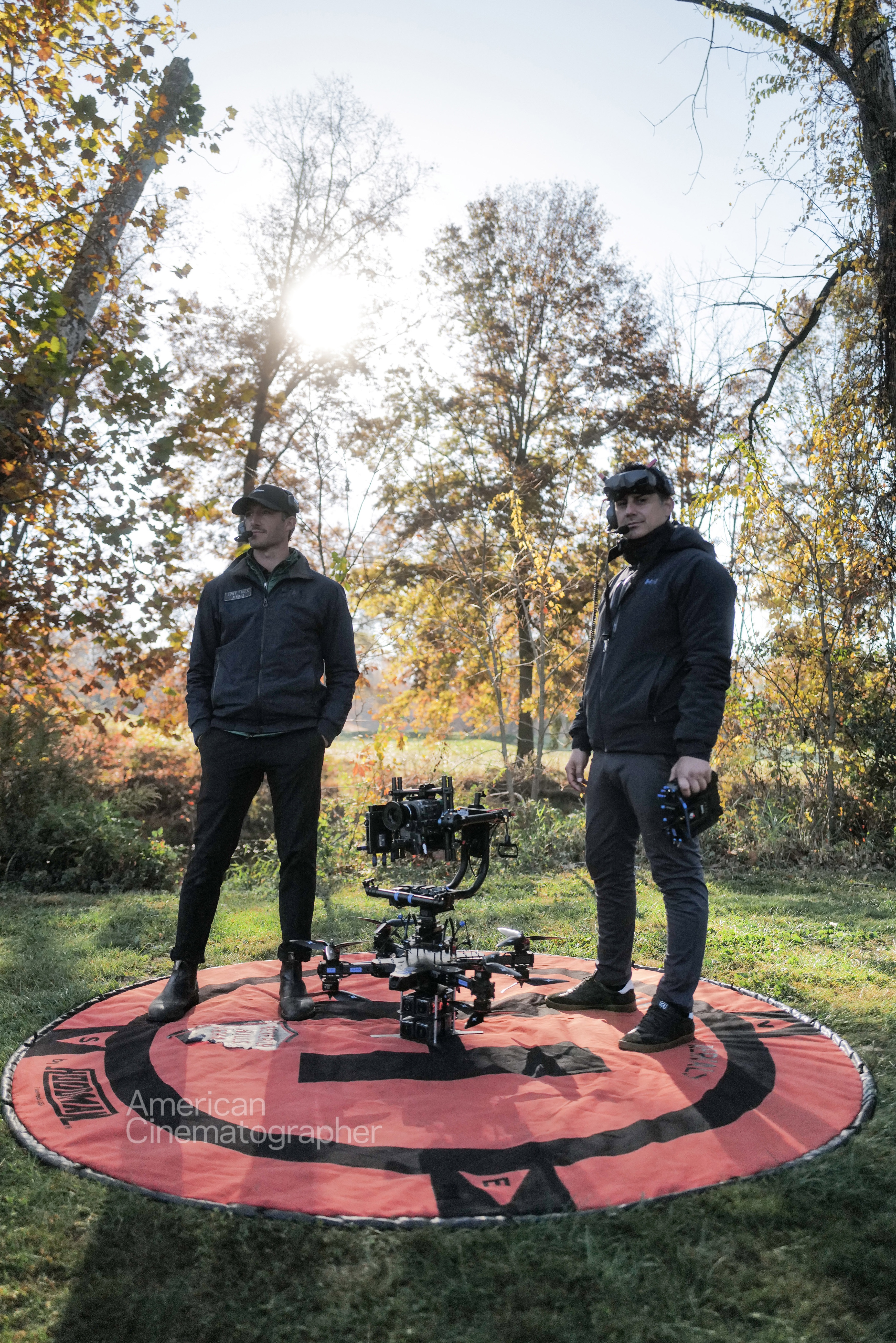
The Latest in Drone Equipment and Services
DJI
DJI recently released the Power Expansion Battery 2000, Goggles N3, a 75mm lens for the Inspire 3, and the RS 4, RS 4 Pro and Focus Pro. The Power Expansion Battery 2000 is a 2-kilowatt-hour extension for the Power 1000. Goggles N3, compatible with the Neo and Avata 2, enables users to enjoy an immersive flight experience from a pilot’s perspective, complete with 360-degree flips and rolls. The DL 75mm F1.8 medium telephoto lens is designed for the Inspire 3’s Zenmuse X9-Air gimbal camera. The RS 4 stabilizer enables solo cinematographers to easily capture large-scale scenes. The RS 4 Pro flagship stabilizer combines stabilization, transmission, monitoring, focusing and control. The Focus Pro is an independent Automated Manual Focus lens-control system. For more information, visit dji.com.
Freefly
The latest products at Freefly include the Alta X and Astro drones and the Pilot Pro controller. The Alta X folds to half its normal size with the push of a finger; the folding linkages stiffen the booms to ensure low vibration and precise flight characteristics. Training sessions tailored to the Alta X are also available. The Astro platform offers Sony LR1, Pilot Pro, Doodle Labs Radio, RTK, LTE cloud connectivity, mission computer and AuterionOS. The Pilot Pro controller features internal and external hot-swap batteries. It has an internal run time of five hours and a one-hour charge time. Users can tap Freefly’s CAD and API to integrate the Pilot Pro into their robotics system. For more information, visit freeflysystems.com.
Flying Monster
New offerings include a Heavy Lift Drone Package, a Light Cinema Package and an FPV Cinelifter. The Heavy Package features the BFD S8 and the Freefly Movi Pro. Users can fly Arri Alexa Mini LF, Sony Venice 2 and Red Helium 8K cameras with zoom lenses, Hawk V-Lite and Panavision G-Series anamorphics, or select PL-mount spherical lenses. The Light Package is designed for the DJI Inspire 3 with X9 Air Gimbal Camera, an 8K-resolution full-frame camera with 18mm, 24mm, 35mm and 50mm lens options. FPV Cinelifters fly the company’s in-house Red Komodo cameras. Equipped with either a top- or bottom-mount gimbal, the Cinelifter can accelerate from 0 mph to 100 mph in less than four seconds. For more information, visit monster-drones.com.
LightCraft
LightCraft offers Cinema FPV, Heavy Lift, Heavy FPV and Drone Light services. Capable of speeds up to 120 mph, the FPV platform is best suited to covering large distances quickly and flying close to subjects. Recent Cinema FPV clients have included the productions Ambulance and Gran Turismo. Heavy Lift drones, designed to fly large cinema cameras for longer periods of time, have been used on such productions as Emancipation and Ferrari. Heavy FPV (or Gimbal FPV) combines the speed and maneuverability of an FPV with the horizon-locking stability of a three-axis gimbal. LightCraft has created several configurations for flying lights on drones, aka Drone Light. System recommendations are based on the creative needs. For more information, visit lightcraft.tv.
Helinet
Helinet’s drone services comprise the DJI Inspire 2, Freefly Alta 8, BFD Systems GD-40 and the Shotover U2. Inspire 2 features a Zenmuse X7 gimbal and a flight time of 16-20 minutes; Alta 8 features a Freefly Movi Pro gimbal and a flight time of 12-14 minutes; GD-40 features Phoenix Ranger LR LiDAR and a flight time of 14 minutes, and U2 features a Shotover G1 gimbal and a flight time of 10-25 minutes. For more information, visit helinet.com.
Helicopter Film Services
Helicopter Film Services currently offers seven drone options: HFS Titan; FPV; DJI Inspire 2, Inspire 3 and Mavic; and Freefly Alta X and Alta 8. The “super heavy lift” Titan is capable of payloads up to 44 pounds and can fly the Arri Rental Alexa 65 with primes and the Alexa Mini LF with Fujinon Premista zooms. The FPV can fly with a fixed camera or a hybrid gimbal and accommodates a variety of cameras. Inspire 2 features the Zenmuse X7. Inspire 3 features the Zenmuse X9. At less than 9 ounces, Mavic is a compact option. The Alta 8 is capable of payloads up to 20 pounds. The Alta X flies on two batteries and is capable of payloads up to 35 pounds. For more information, visit helicopterfilmservices.com.
— AC Staff




